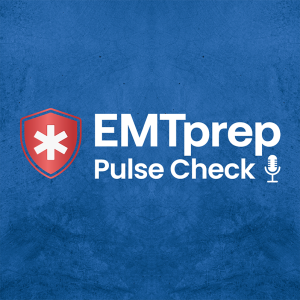
Tuesday Jun 24, 2025
Introduction and Basic A&P Review
Welcome to the debut episode of EMTprep Pulse Check, the podcast built to sharpen your knowledge, help you ace your exams, and keep you ready for the field. In this opening session, we lay the groundwork for what to expect in future episodes and explain how this series will support your EMTprep.com learning experience.
We begin by introducing the format and goals of the podcast. The series is designed to provide clear, accessible explanations of EMT content, reinforce high-yield exam material, and connect classroom learning to real-world EMS situations. Whether you're preparing for the NREMT, currently enrolled in an EMT course, or reviewing foundational knowledge as a practicing provider, this podcast is meant to meet your needs.
The focus of this episode is on Basic Anatomy and Physiology, one of the most essential areas of EMS knowledge. Listeners are guided through the major body systems from a functional perspective, with an emphasis on how each system supports homeostasis and responds to injury or illness. We also cover the language of A&P, including key terminology, directional terms, and important structures every EMT should recognize.
Throughout the episode, A&P concepts are tied to real EMS applications. For example, we explore how an understanding of perfusion helps explain shock and how neurological changes relate to stroke symptoms. This is not just academic content. It is the framework EMTs use to interpret symptoms, make decisions, and provide care in high-pressure environments.
By the end of this episode, you will have a stronger understanding of why A&P is more than just a test topic. It is a clinical tool that will support your work throughout your EMS career.
What You’ll Learn:
-
An overview of how EMTprep Pulse Check supports your exam prep and field performance
-
The importance of mastering basic A&P for EMTs
-
Key body systems and their roles in emergency response (e.g., respiratory, cardiovascular, nervous)
-
Common terminology and directional references used in EMS
-
How A&P knowledge is applied to real-world EMS scenarios and NREMT test questions
Key Takeaways:
-
Understanding structure-function relationships is vital for clinical decision-making in the field
-
EMS professionals rely on anatomical terminology for communication and precision
-
Foundational A&P knowledge is a frequent focus of NREMT exam content
No comments yet. Be the first to say something!